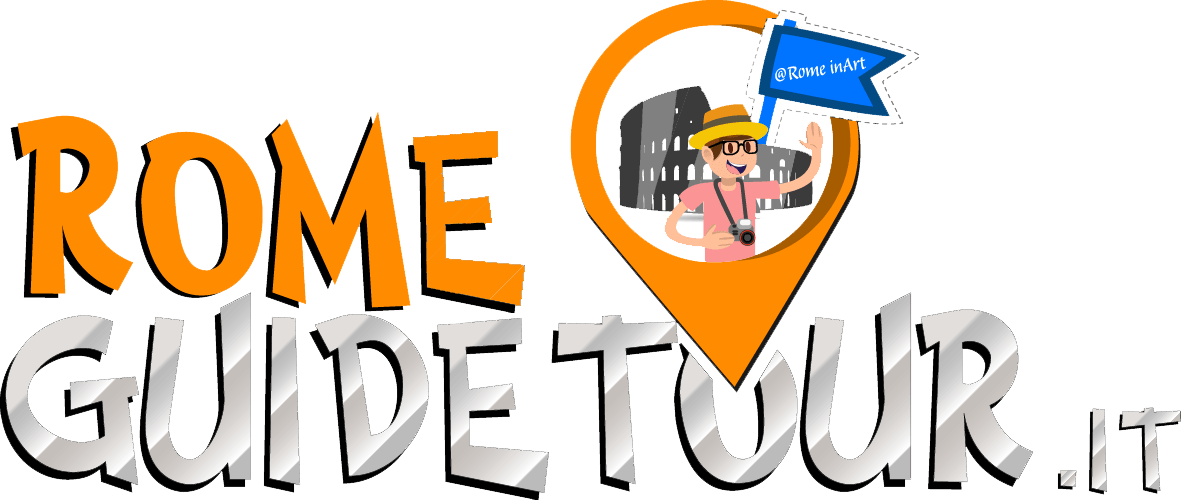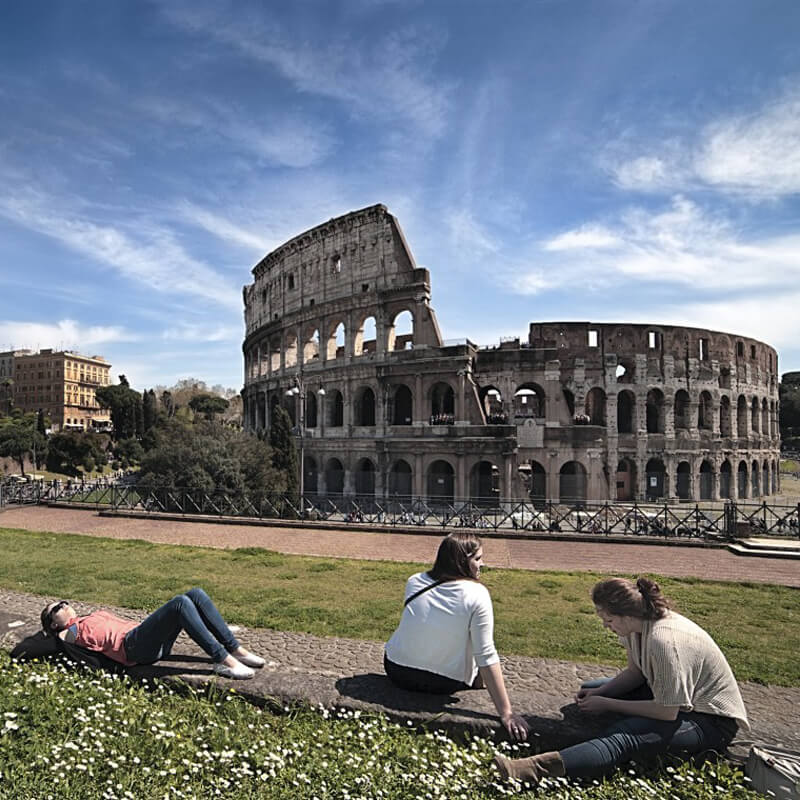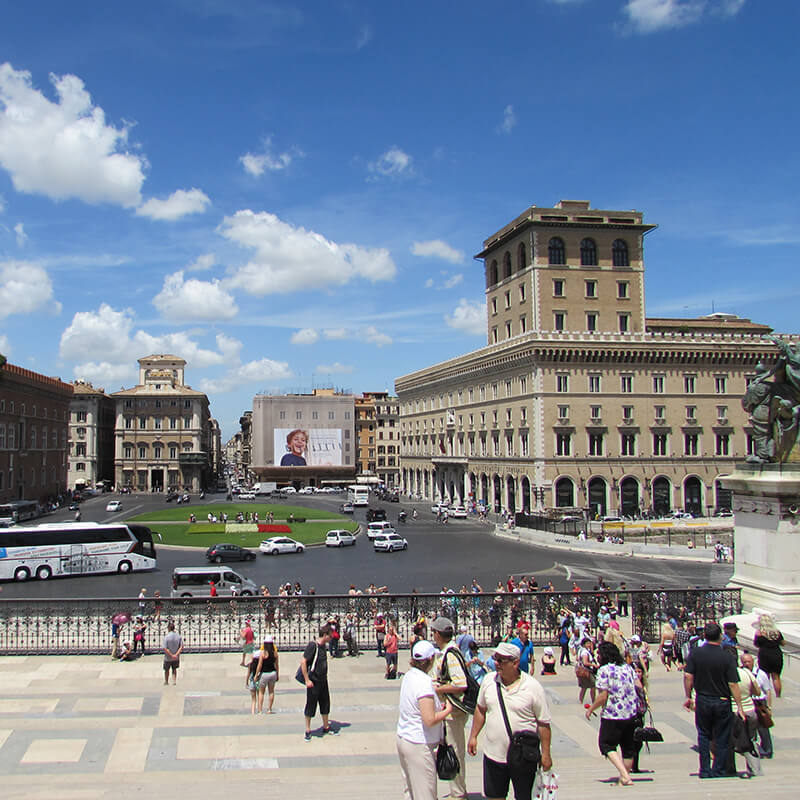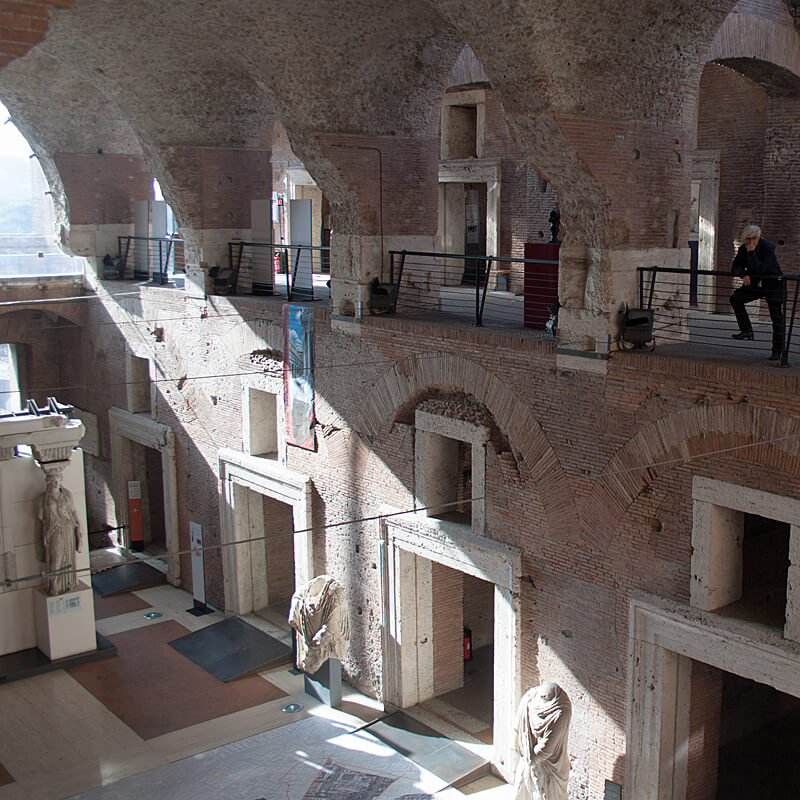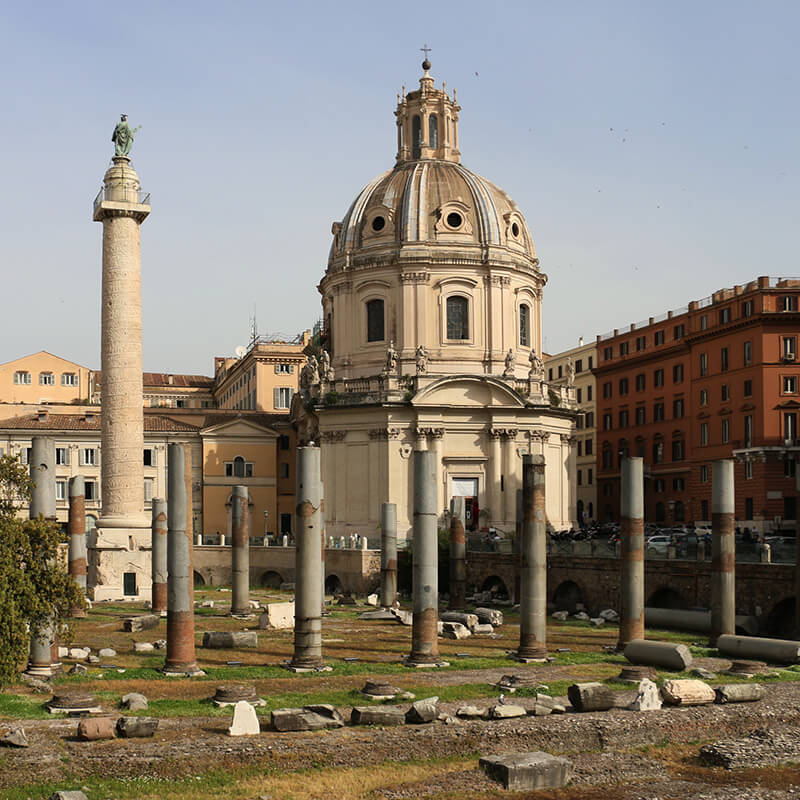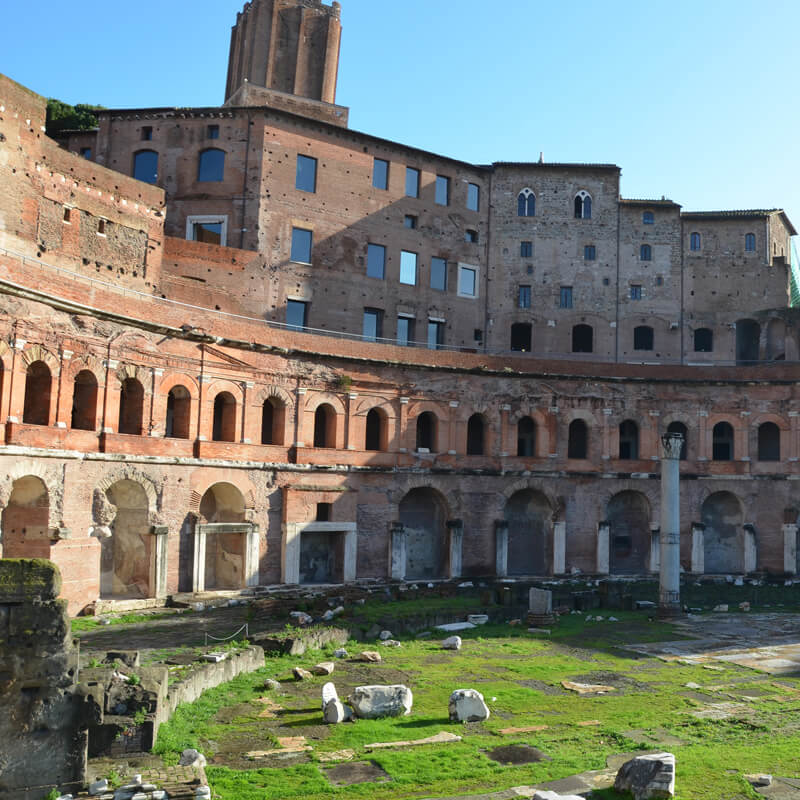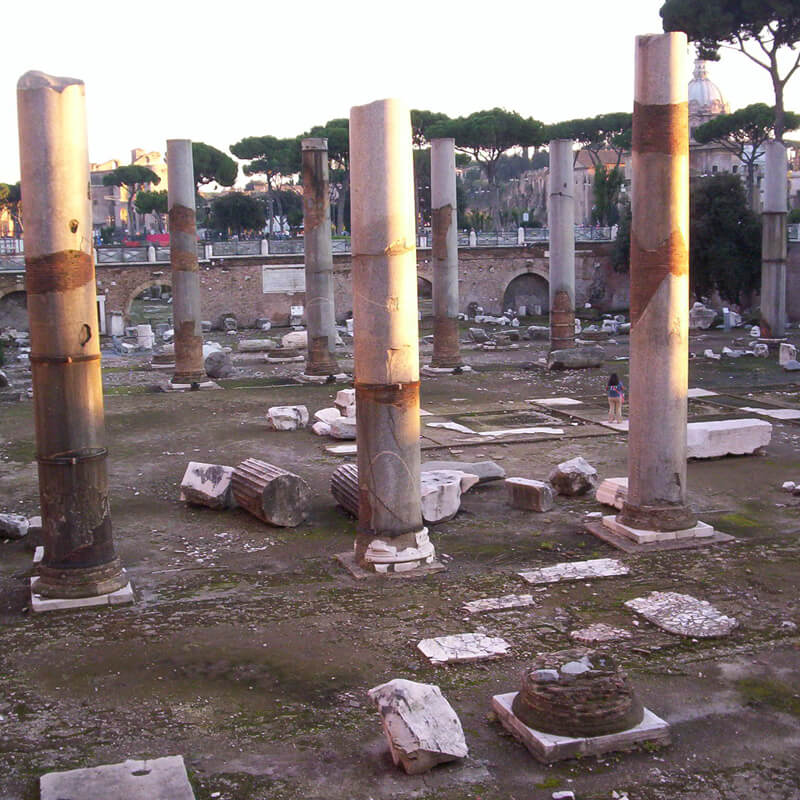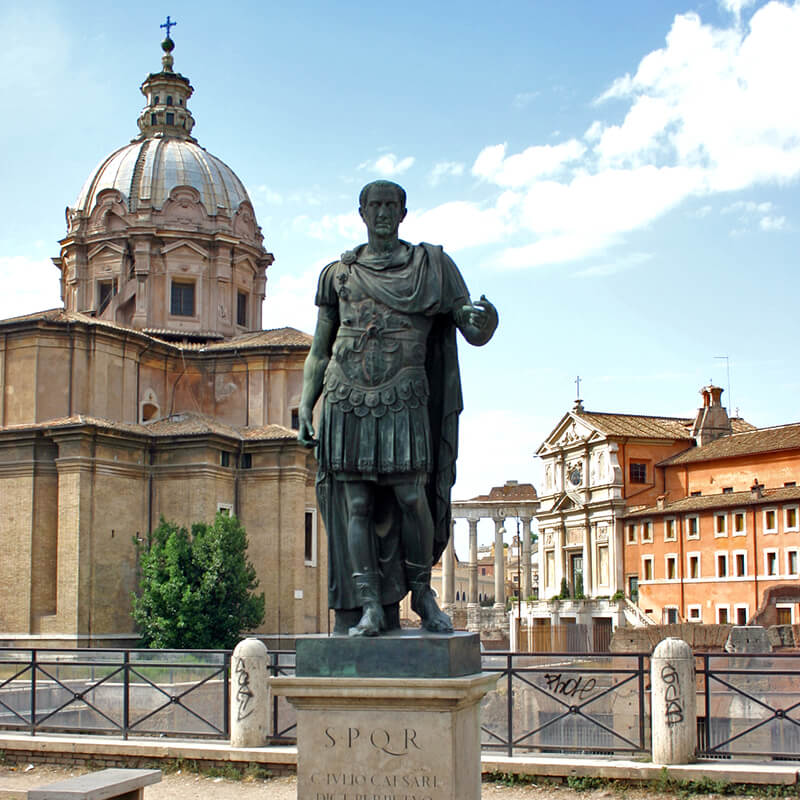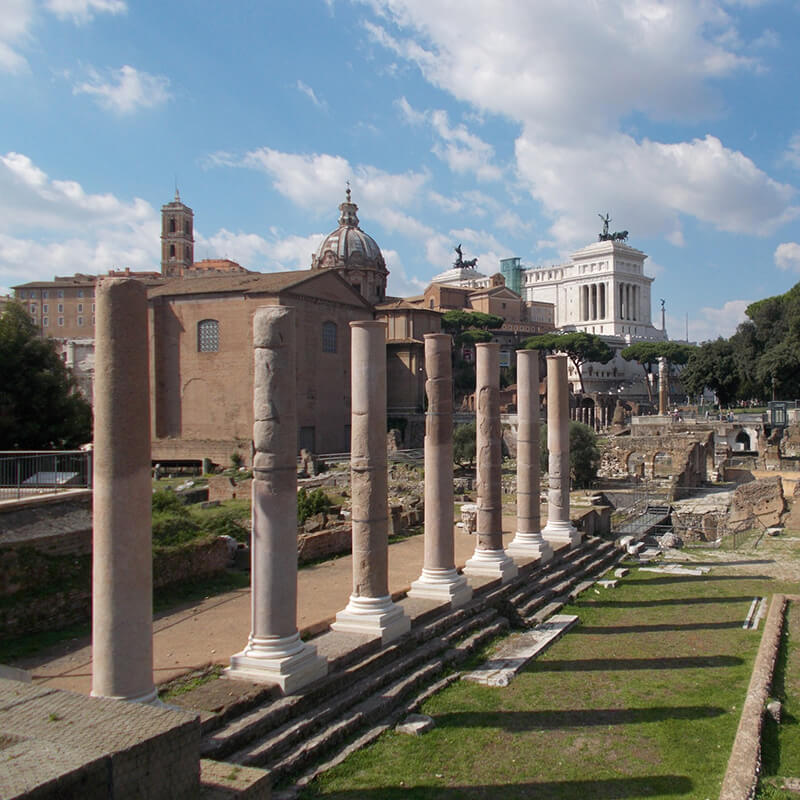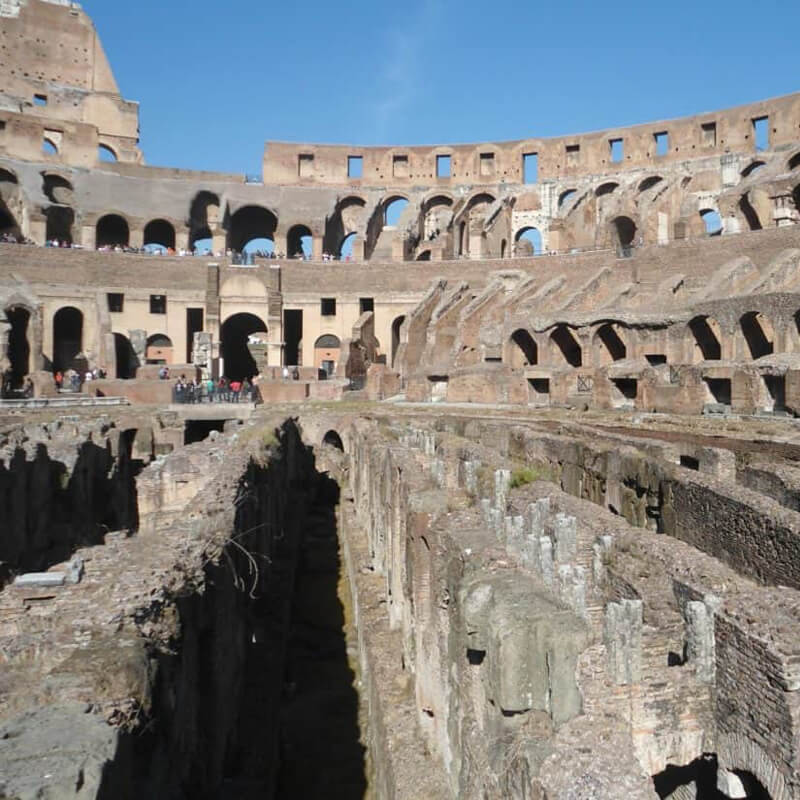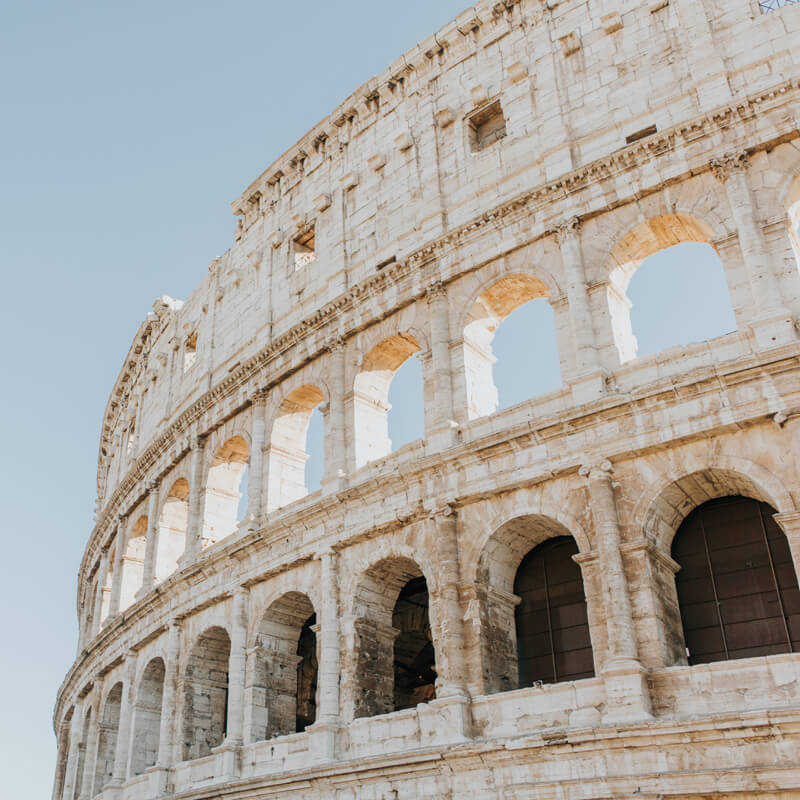First stop
If you are in Piazza Venezia or you come from Via Nazionale, you will see the remains of the Mercati di Traiano and, once you go down the stairs, you will find yourself in front of the colossal Historiated column of Trajan. The complex of structures in this area is also known as the Trajan’s Forum and represents the last and largest public complex built in this area between Piazza Venezia and the Colosseum.
For those who have already wandered around the streets of the Eternal City, this column may appear familiar, perhaps because they have already seen a similar one near Palazzo Chigi (seat of the Prime Minister). Among the various curiosities connected to this column it must be said that today the statue of the emperor Trajan no longer stands on the top, and has been changed with that of St. Peter, probably this column was transformed in the Middle Ages into a Christian column by replacing the statue of the old emperor with that of the first pope of the Roman church, a statue that looks towards the Vatican, center of power of the popes until 1870.
Second Stop
Continuing towards the Colosseum along Via dei Fori Imperiali, you can see Piazza Venezia behind you and another famous palace in Rome, Palazzo Venezia, the ancient headquarters of Mussolini during his 20-years he ruled, until to the second world war. Among the various curiosities connected to Palazzo Venezia there is a very particular one; the central balcony with the two flags from which Mussolini looked out to address the people during his speeches corresponds to the famous Sala del Mappamondo, Mussolini’s office. It is said that inside this study there was a light that was always on to show how the Duce and the fascist regime always worked and never slept.
The same street you are traveling on, Via dei Fori Imperiali (originally via dell’Impero) was built during the Fascist period to connect two very important monuments of Rome that symbolically represented the power of ancient Rome and that of Modern Rome. This road connects the Colosseum, a symbol of the power of the emperors, and Palazzo Venezia, a symbol of the power of Mussolini and Fascism. To build this famous street, an entire neighborhood was demolished, and several remains from different eras were found, including the bones of a prehistoric elephant.
Continuing along via dei Fori Imperiali you will notice the remains of ancient squares connected to different emperors, both on the left and the right of the street; in fact, each Forum is marked by the presence of the statue of its client. Proceeding towards the Colosseum you will then find in sequence the statues of Trajan, Augustus and Nerva on the left while on the right the statue of Caesar , who was the first to begin the construction of a new series of Forums, the public squares, widening from the oldest one which was now “saturated” with monuments, namely the Roman Forum.
Among the various curiosities about the Forum of Caesar it must be said that according to sources Jukius Caesar spent a real fortune to build this square dedicated to his name and the origin of his family; it is said that it spent an amount close to one million gold coins, a figure that is perhaps comparable to our billion euros, especially if you think about the quality of the materials used.
Fourth stop
Attached to the Forum of Caesar it is possible to see the Roman Forum, an area used for more than a thousand years since the seventh century BC. to the seventh century AD. The Forum of Caesar is a monumental work made up of temples, courts, places linked to trade and more. Only few know that this “Piazza” was born from a swamp reclaimed with the construction of the Cloaca Maxima.
From this moment on it will be a succession of monuments up to the seventh century AD. when a column was raised in honor of the Eastern Emperor Phocas. This is because at that time the Western Roman Empire had already fallen and the new “master” of Rome was the Pope. In that period the Roman Forum will change its function becoming a pasture for various animals, especially cows from which it will take its new name, Campo Vaccino.
From the terrace overlooking the forum you can also perceive the difference in level that separates ancient Rome from modern one, a difference in height of about 8-9 meters; a feature of the Eternal City, since it is a layered city, with the remains of ancient Rome serving as foundations for the next one and so on.
Continuing towards the Colosseum we cannot fail to notice other colossal structures that precede the big arena, such as the great arches of the Basilica of Maxentius, which is one of the many courts that could be found in the area of the forums, where dozens of trials were held, probably more than one hundred trials a day in the various courts – but then, as today, Roman justice was very slow.
Immediately after the basilica of Maxentius it is possible to see the remains of the Temple of Venus and Rome, which connects directly to the Colosseum together with other public monuments in this area, such as the colossal palace built by the emperor Nero, the Domus Aurea. This colossal complex with its gardens was most likely to be larger than the current extension of the Vatican City state, but was reused by Nero’s successors to build public monuments such as the Colosseum (and not only) and thus return to Rome the public land that Nero had stolen from the people for private use.
Sixth stop
Once in front of the Colosseum we cannot help but wonder why it is called this way. There are many stories and reasons, I will tell you a few, the ones I like the most and which are perhaps the most reliable. The name “Colosseum” only arrived in the Middle Ages: the most accredited theory seems to be that it is called this way because it was built near the statue of Nero’s “colossus” which stood a few meters from the amphitheater. Other scholars propose that it derives from its position, because it would rise on a hill where once there was a temple of Isis (hence Collis Isei ). But there is also a black legend according to which in ancient times it was a pagan temple, where the devil was worshiped. And at the end of each ceremony the priests asked the followers: “ Colis Eum ?” (“Do you love him?”).
From this point you can continue your exploration of the eternal city by visiting the Circus Maximus, the Aventine Hill and Foro Boarium. The closest metro stations are Colosseo and Circo Massimo. If you need a guide feel free to contact me via email or phone, by booking my guided tour to Ancient and Archaeological Rome, or another of the my many proposals for itineraries and guided tours in and around Rome.
